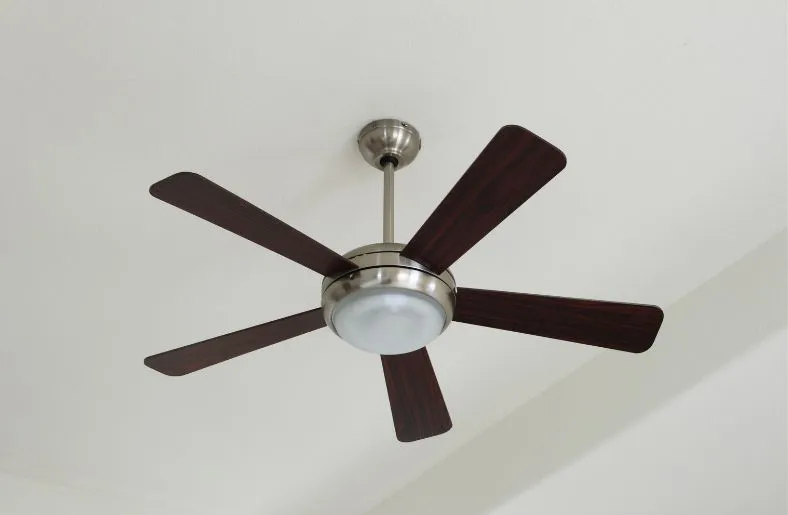Ceiling fans are a common fixture in many homes, providing comfort and circulation. However, like any mechanical device, they require regular maintenance to function at their best. One question that often arises is whether ceiling fans need to be oiled.
In this article, we’ll explore the answer to do ceiling fans need to be oiled, the importance of oiling ceiling fans, and how to do it properly.
Table of Contents
Do Ceiling Fans Need to Be Oiled?
Why Do Ceiling Fans Need to be Oiled?
Ceiling fans need to be oiled to ensure smooth and efficient operation. Over time, the moving parts of a ceiling fan, such as the motor and bearings, can experience friction, which can lead to wear and tear. Oiling the fan helps to lubricate these moving parts, reducing friction and preventing them from seizing up or becoming noisy.
One question that often arises is whether ceiling fans need to be oiled. Regular oiling also helps to extend the lifespan of the fan by reducing wear on its components. Additionally, a well-oiled fan operates more quietly and consumes less energy than a fan with dry or worn-out parts.
What are the benefits of Oiling a Ceiling Fan?
Oiling a ceiling fan offers several benefits that contribute to its smooth operation and longevity:
- Reduced Friction: Regular oiling lubricates the moving parts of the fan, such as the motor and bearings, reducing friction. This minimizes wear and tear on these components, ensuring smoother and quieter operation.
- Enhanced Efficiency: A well-oiled ceiling fan operates more efficiently, requiring less energy to function. By reducing friction, oiling helps the fan blades rotate more freely, circulating air more effectively and improving airflow throughout the room.
- Extended Lifespan: Proper maintenance, including oiling, can extend the lifespan of a ceiling fan. By preventing excessive wear on its components, oiling helps keep the fan in good condition for longer, reducing the need for frequent repairs or replacements.
- Quieter Operation: Oiling helps to dampen noise caused by friction and vibration in the fan’s moving parts. A properly lubricated ceiling fan operates more quietly, enhancing comfort and reducing distractions.
- Improved Performance: Regular oiling ensures that the fan operates at its optimal performance level. This means consistent airflow and cooling benefits, making the space more comfortable year-round.
While oiling provides these benefits, it should be done according to the manufacturer’s guidelines and recommendations. Over-oiling or using the wrong type of oil can lead to damage and may void the fan’s warranty. Following proper maintenance procedures will help maximize the benefits of oiling while ensuring the continued reliability of the ceiling fan.
How to Oil Your Ceiling Fan?
Before you seek the answer to “Do ceiling fans need to be oiled?” please make sure to turn off the power to the fan at the circuit breaker or by switching off the wall switch.
- Gather Your Supplies:
- A step ladder or sturdy platform.
- A screwdriver (usually Phillips or flathead, depending on your fan’s design).
- A high-quality ceiling fan oil or a lightweight motor oil.
- Clean rags or paper towels.
- Access the Motor Housing:
- Use the screwdriver to remove the screws securing the motor housing or canopy cover. This cover typically hides the motor and the oil ports.
- Locate the Oil Ports:
- Look for small holes or caps on the motor housing. These are the oil ports. Some fans have one, while others may have several.
- Apply the Oil:
- Place a few drops of oil into each oil port. Be cautious not to overdo it, as too much oil can lead to drips or leaks.
- Rotate the Blades:
- Gently rotate the fan blades by hand to distribute the oil evenly throughout the bearings and moving parts.
- Wipe Excess Oil:
- Use a clean rag or paper towel to wipe away any excess oil that may have dripped onto the motor housing.
- Reassemble the Fan:
- Securely reattach the motor housing or canopy cover and tighten the screws.
- Turn the Power Back On:
- Once you’ve completed the oiling process and everything is back in place, you can turn the power back on.
Related Guide: Can You Use WD-40 on Hair Clippers: Unveiling the Truth (2023-2024)
FAQs
1. Do ceiling fans need to be oiled?
Some ceiling fans have maintenance-free double-sealed ball bearings that never require oiling. Other ceiling fans have a small “oil hole” above the motor. To find this oil hole, you should ensure that the fan is turned off, stand on something very sturdy, and then check for the oil hole on the top portion of the motor.
2. Can you use WD 40 on a ceiling fan?
Lubricating your ceiling fan plays an essential role in its maintenance and WD-40 makes your fan run smoothly within a few minutes.
3. Why do ceiling fans get so dusty?
Ceiling fans appear to collect dust so much quicker than other items as static electricity builds up on the blades as they spin. Because of this, ceiling fans, despite their awkward location, should be dusted weekly to help relieve allergies and prevent dust and grime build-up.
Conclusion
One question that often arises is whether ceiling fans need to be oiled. The final words are Yes! It is possible. Regular oiling of your ceiling fan is essential to keep it running smoothly and quietly. By addressing issues like squeaking noises and stiff blades promptly, you can extend the life of your fan and enjoy the benefits of improved air circulation.
Remember to use the right type of oil and follow the manufacturer’s recommendations for maintenance to ensure your ceiling fan operates efficiently for years to come.

